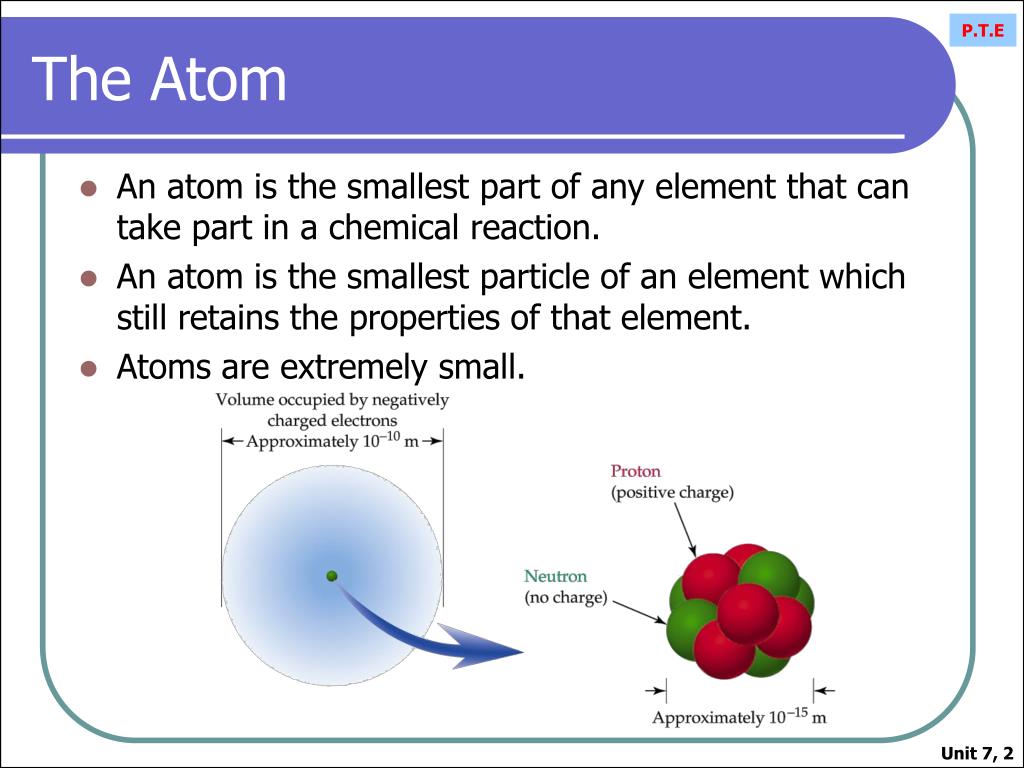- Smallest Known Particle
- The Smallest Particle Of An Element That Can Exist
- The Smallest Particle Of An Element That Retains The Properties Of That Element
- The Smallest Particle Of An Element
The smallest particle of an element that retains the element properties. Negatively charged particle. Neutral particle. The smallest particle of an element is an atom Thanks Welcome evaness136 evaness136 The correct answer is b. New questions in Biology. This subatomic particle is located in the nuclei of atoms. The particle’s mass is equal to approximately one atomic mass and, along with the atom’s neutrons, accounts for the majority of an atom’s overall mass. Protons have a positive charge. The atoms of every element have a set number of protons, representing the elements atomic number. The smallest particle of an element is a/an A.


Elements and Atoms
Smallest Known Particle
An element is a pure substance. It cannot be broken down into other types of substances. Each element is made up of just one type of atom.
Structure of an Atom

An atom is the smallest particle of an element that still has the properties of that element. Every substance is composed of atoms. Atoms are extremely small, typically about a ten-billionth of a meter in diameter. However, atoms do not have well-defined boundaries, as suggested by the atomic model shown in figure (PageIndex{2}). An atom is composed of my subatomic particles. We will only discuss protons, neutron, and electrons.
| Particle | Proton | Neutron | Electron |
|---|---|---|---|
| Electric Charge | +1 | 0 | -1 |
| Location | Nucleus | Nucleus | Outside the nucleus |
| Mass | 1 amu | 1 amu | ~0 amu |
If the number of protons and electrons in an atom are equal, then an atom is electrically neutral because the positive and negative charges cancel out. If an atom has more or fewer electrons than protons, then it has an overall negative or positive charge, respectively, and it is called an ion.
The Smallest Particle Of An Element That Can Exist
The negatively charged electrons of an atom are attracted to the positively charged protons in the nucleus by a force called electromagnetic force, for which opposite charges attract. Electromagnetic force between protons in the nucleus causes these subatomic particles to repel each other because they have the same charge. However, the protons and neutrons in the nucleus are attracted to each other by a different force, called nuclear force, which is usually stronger than the electromagnetic force repelling the positively charged protons from each other.
The Smallest Particle Of An Element That Retains The Properties Of That Element
Periodic Table of the Elements
The Smallest Particle Of An Element
There are almost 120 known elements. As you can see in the Periodic Table of the Elements shown in Figure (PageIndex{3}), the majority of elements are metals. Examples of metals are iron (Fe) and copper (Cu). Metals are shiny and good conductors of electricity and heat. Nonmetal elements are far fewer in number. Thenkachi ko swaminathan books pdf. They include hydrogen (H) and oxygen (O). They lack the properties of metals. The element most important to life is Carbon (C). Find carbon in the table. What type of element is it, metal or nonmetal?

